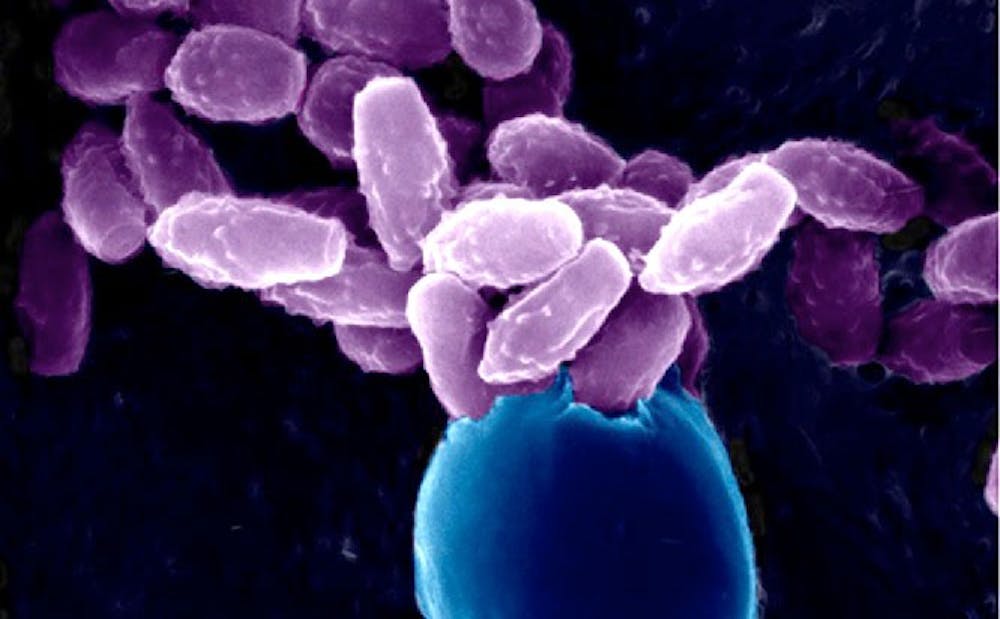A study that challenges the former understanding of fungal sex could aid scientists in finding treatments for fungal infection.
Led by Joseph Heitman–director of the Center for Microbial Pathogenesis and James B. Duke professor and chair—the study found that the sexual reproduction of fungi with others of the same mating type can lead to genetic diversity that is beneficial to the survival of the organism. The study specifically looks at the sexual cycle of Cryptococcus neoforman because it is during this fungi’s reproduction process that infection-causing spores are produced.
“If you understand the pathogenesis of the microbe, it is easier for you to fight it,” said Marianna Feretzaki, a sixth-year graduate student of genetics and genomics in Heitman’s lab and author on the study.
Cryptococcus is a pathogen that infects humans with deficiencies in their immune systems, such as HIV and AIDS patients, organ transplant recipients and patients taking steroids.
Heitman estimated that there are more than 6,000 deaths each year attributed to Cryptococcus neoforman—about one-third of which are AIDS-associated deaths. Infections are caused by people inhaling the tiny purple spores produced during the fungi’s sexual cycle.
“[Fungal infection] is a very significant global health problem,” Heitman said.
The organism has two mating types—a and alpha—similarly to the two sexes in humans. Virtually all Cryptococcus organisms are mating type alpha—among the 3,000 organisms used in the study, only three of them were mating type a. This means that in many circumstances a Cryptococcus population is entirely unisexual.
Heitman noted that this often leads to the assumption that fungi only reproduce asexually. About eight years ago, however, it was discovered that unisexual reproduction—sex within the same mating type—does occur, even when the genomes are completely identical.
“Imagine if identical twins could marry and have children,” Heitman said. “They would have identical children.”
Heitman noted, however, that the process of unisexual fungi reproduction has a specific purpose.
“Since you know sex exists to introduce diversity, the question was why two identical cells go through these processes if it’s not going to make any difference,” Feretzaki said.
The unisexual reproduction of fungi functions to generate diversity in some way, researchers hypothesized.
The offspring created through the unisexual reproductive cycle differed greatly from their asexually created counterparts. Compared to the asexual spawn—which were identical to their parents—the unisexually created organisms had a higher resistance to anti-fungal drugs.
The majority of the unisexually created progenies had an extra chromosome—a genetic change called aneuploidy.
“Analogy of aneuploidy in humans would be if you have an extra copy of chromosome 21—you are born with Down’s syndrome,” Heitman said.
Although aneuploidy is deleterious in humans, it can be beneficial in fungi. The extra chromosome makes the fungi grow faster in an infected host. If there is an extra copy of chromosome nine or 10, the organism can be resistant to fluconazole—one of the drugs used to treat patients with fungal infection.
“The findings broaden our vision in understanding how microorganisms develop the smart way to survive in harsh conditions, such as anti-fungal drug treatment,” said Min Ni, a post-doctoral fellow and a co-author of the study.
She added that the new information will help researchers to develop new types of anti-fungal drugs by inhibiting the generation of aneuploidy.
“We want to know everything about this pathogen, where it is found in the environment, what its life cycle is and what is causing this infection,” Heitman said.
He added that in the last decade, the scientific community discovered that asexual reproduction was not the only possible sexual cycle. The more accurate understanding of fungal reproduction could lead to advancements in the field.
“So if we can figure out how to interrupt this unisexual cycle in nature, we could reduce the amount of infectious spores that are produced, which could be a measure of intervention,” Heitman said.
Get The Chronicle straight to your inbox
Signup for our weekly newsletter. Cancel at any time.

